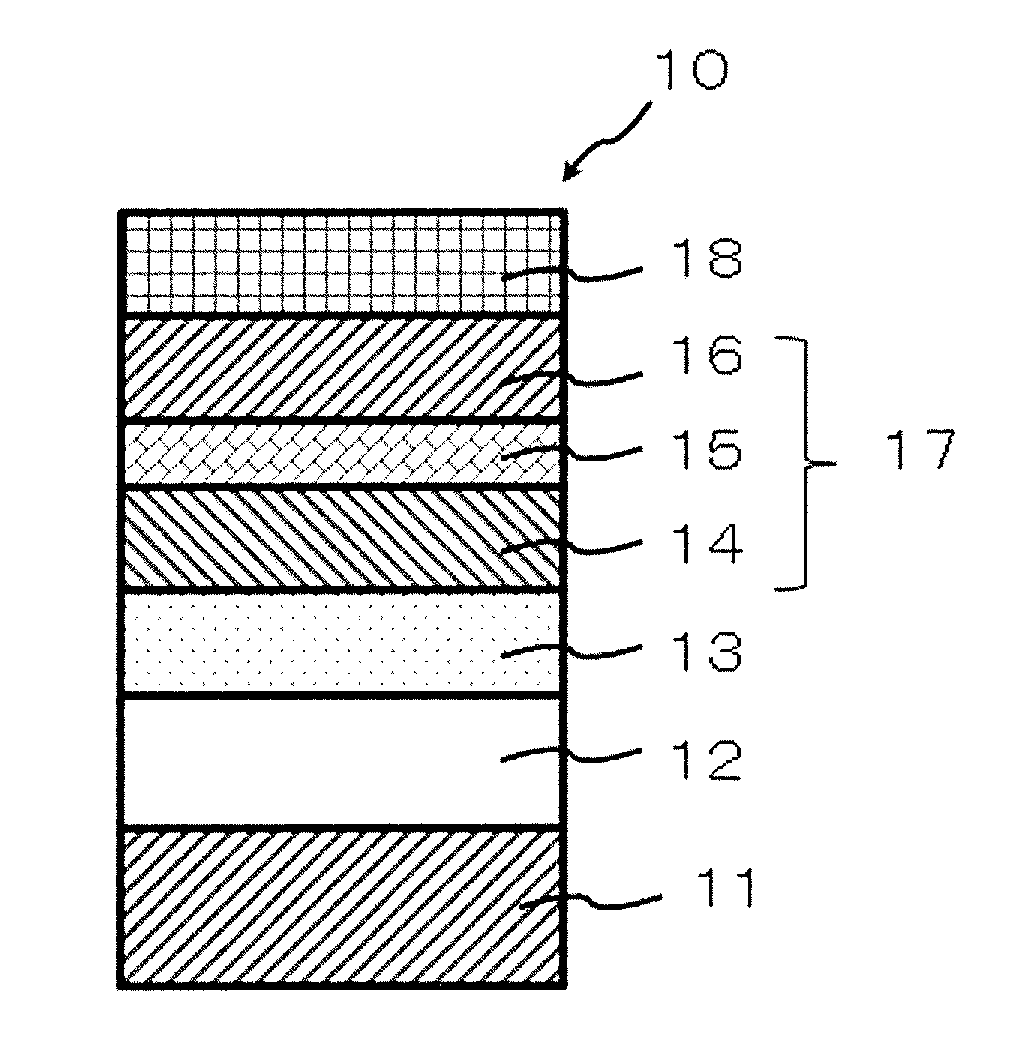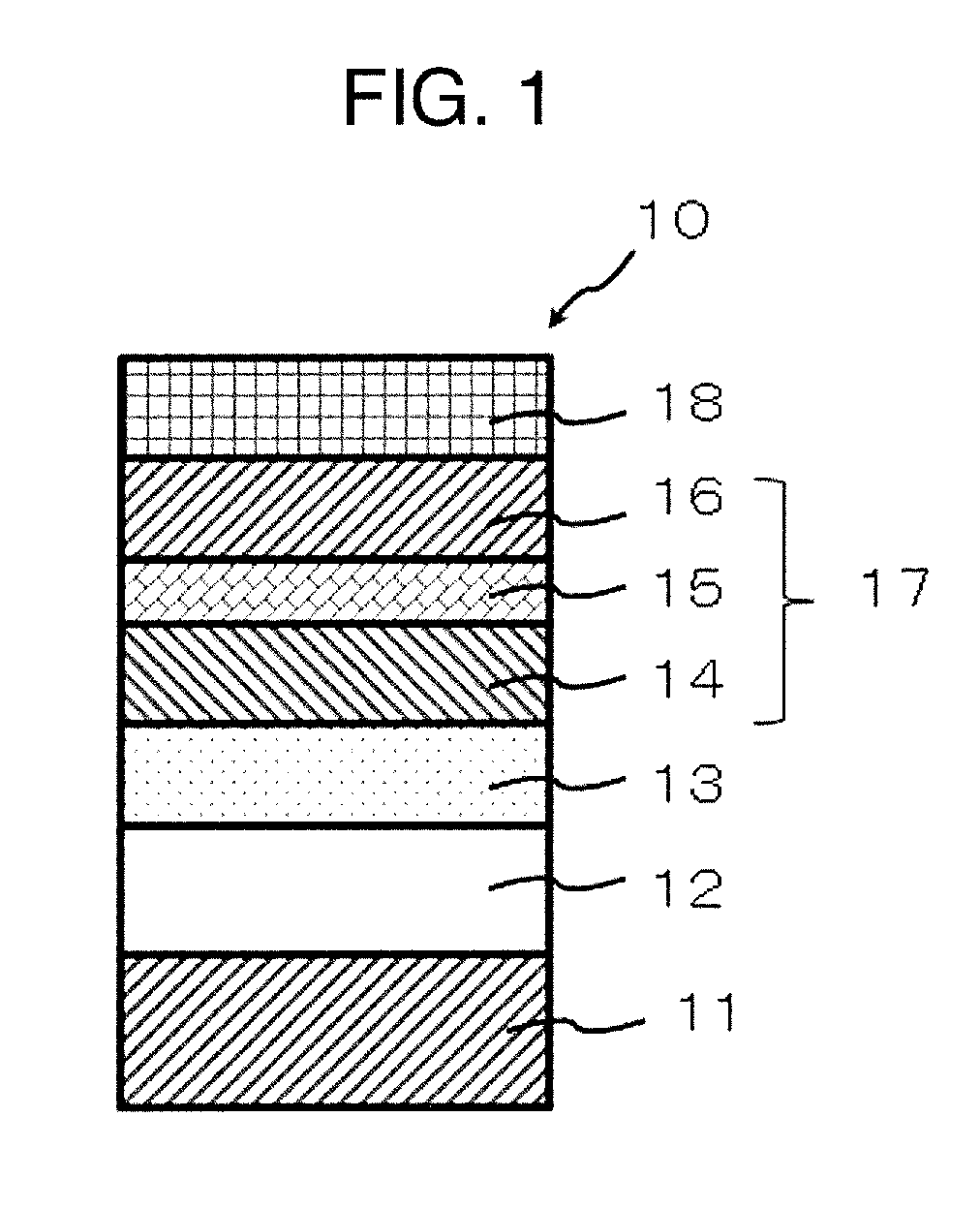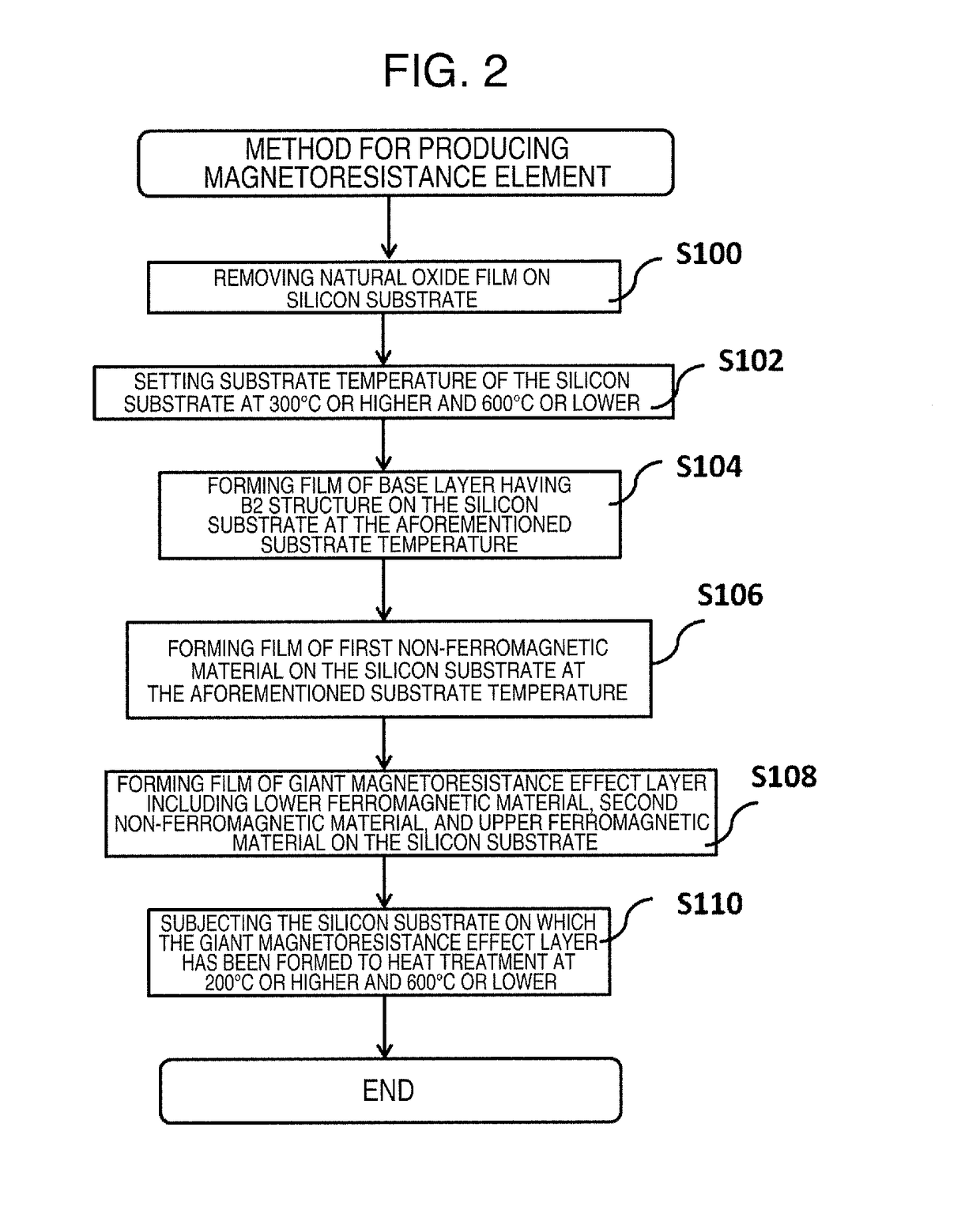Monocrystalline magneto resistance element, method for producing the same and method for using same
a monocrystalline magneto and resistance element technology, applied in the field of monocrystalline magneto resistance element, can solve the problems of low sensitivity as a magnetic sensor, disadvantageous recrystallization, low cost, etc., and achieve the effects of high interface flatness, low cost and mass productivity
- Summary
- Abstract
- Description
- Claims
- Application Information
AI Technical Summary
Benefits of technology
Problems solved by technology
Method used
Image
Examples
examples
[0085]In a first Example, a film of NiAl (thickness 50 nm) having a B2 structure was formed on a Si(001) monocrystalline substrate from which a natural oxide film on a surface thereof had been removed with diluted hydrofluoric acid at a substrate temperature of 300° C. to 600° C.
[0086]FIG. 5 illustrates an XRD pattern of the NiAl thin film grown on the Si(001) substrate at the substrate temperature of 300, 400, 500, or 600° C. in an Example of the present invention, and a RHEED image thereof. The vertical axis indicates an intensity (count), and the horizontal axis indicates 20. As illustrated in FIG. 5, an X-ray diffraction pattern indicating single crystal growth of NiAl in a (001) direction and a streak of a reflection high energy electron diffraction (RHEED) image were observed at the substrate temperature of 400° C. to 600° C. On the other hand, an X-ray diffraction pattern indicating single crystal growth of NiAl in a (001) direction was not obtained but a peak in a (110) dire...
PUM
 Login to View More
Login to View More Abstract
Description
Claims
Application Information
 Login to View More
Login to View More - R&D
- Intellectual Property
- Life Sciences
- Materials
- Tech Scout
- Unparalleled Data Quality
- Higher Quality Content
- 60% Fewer Hallucinations
Browse by: Latest US Patents, China's latest patents, Technical Efficacy Thesaurus, Application Domain, Technology Topic, Popular Technical Reports.
© 2025 PatSnap. All rights reserved.Legal|Privacy policy|Modern Slavery Act Transparency Statement|Sitemap|About US| Contact US: help@patsnap.com



